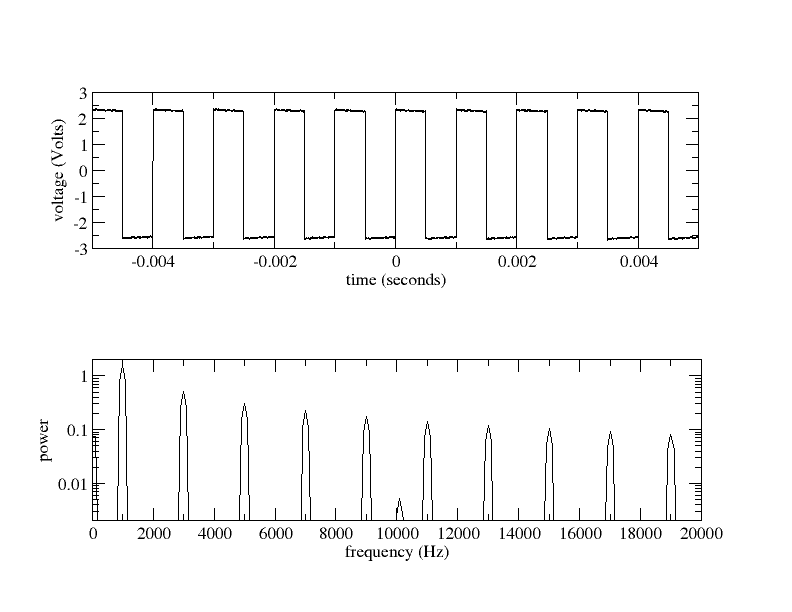Week of 11/5
Here is the display of my oscilloscope when the input is a 1000 pulse per second output of a time-code generator. (The time-code generator is a device that locks to the 10 MHz output of an atomic clock and produces 1 Hz or 1 KHz pulse trains as well as human readable time synchronized to the atomic standard.)
I imported the data and plotted it along with its periodogram.
Notice that only the odd harmonics are present.
Here is a mathematica notebook that simulates this.
| |
Sampling theorem. See 10/31/07 lecture notes
We end up with

This amounts to taking samples of the data every 1 / 2fs and multiplying them by a sinc function and adding up the results.
| |
Mathematica can find the fourier transform of a box function of width h centered on zero times sin(2πx):

| |
| |

